Matching the hatch is the process of matching an imitation fly to the natural flies the fish are feeding on. And frankly, insect identification and fly selection can be confusing to both new and experienced anglers alike. This is why I have created a hatch calendar to guide you through this process and give you more confidence in your fly choice.
Hatch Calendar
Use this hatch calendar just like any other hatch chart. Hatches are split into either minor hatches or major hatches. A major hatch is when you can expect to see the largest number of flies on the water, and it is typically when the peak hatch occurs. A minor hatch is defined as a hatch that is either just getting started or tailing off, and as a result, you can expect to see fewer flies on the water.
| Insect | March | April | May | June | July | August | September | October |
| March Brown | Major | Major | ||||||
| Large Dark Olives | Major | Major | Minor | Minor | ||||
| Grannon | Major | |||||||
| Hawthorn Fly | Minor | Major | ||||||
| Olive Upright | Major | Major | ||||||
| Iron Blue | Minor | Major | Major | Minor | Minor | Minor | Major | |
| Yellow May | Minor | Major | Major | |||||
| Mayfly | Major | Major | ||||||
| Pale Watery | Major | Major | Major | Major | ||||
| Blue winged Olive | Major | Minor | Minor | Major | ||||
| Sedges | Major | Major | Major | Major | Minor | |||
| Coch-y-bonddu | Major | Major | Major | Major | ||||
| Crane Fly | Minor | Major | Major | |||||
| Autumn Dun | Major | Major | minor |
Spring trout flies
In Wales, we’re blessed with the trout season opening on March 3rd. This gives the eager fly angler the first opportunity of the year to dust off those dry fly rods.
March Browns
Season: March – April
One of the first major hatches of the trout fishing season, March browns, can be seen on the water throughout March and April. Hatches are mostly likely to occur at midday due to the midday sun warming temperatures just enough to trigger a hatch. But with weather conditions becoming increasingly unpredictable, it pays to keep an eye on the forecast for when temperatures are predicted to be at their highest.

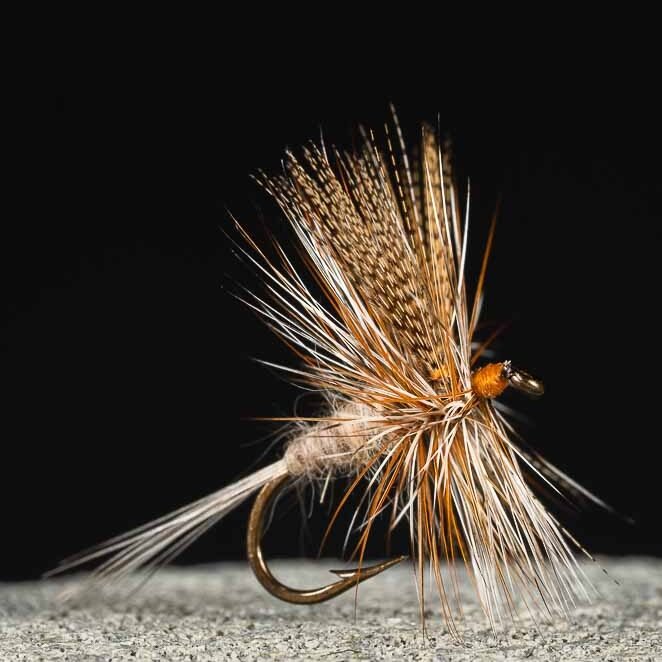
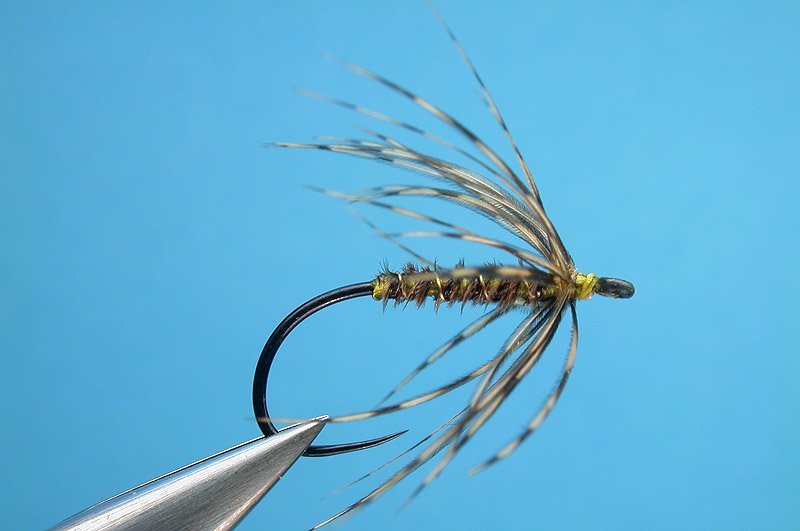
Large Dark Olive
Season: March – April
The main hatches of the Large Dark Olive occur in March and April, with a smaller hatch taking place in September and October. Although these flies can hatch throughout the year in small numbers, The LDOs that hatch in the spring tend to be larger than their autumn counterparts, so make sure to carry some smaller imitations for later in the year.
In the spring, the Large Dark Olive and March Brown are likely to be the only two up-and-coming winged flies on the water, making identification fairly easy. An easy way to spot the difference between the two is their wings. Large dark olive wings are pale and grey in colour compared to March brown wings, which are a mottled brown.

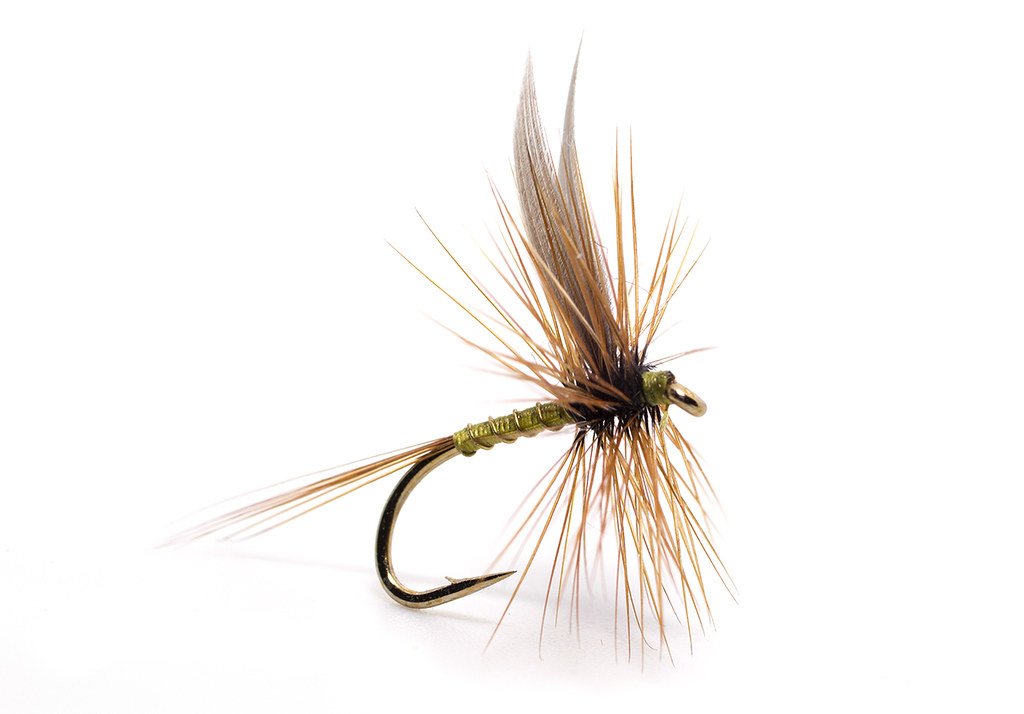

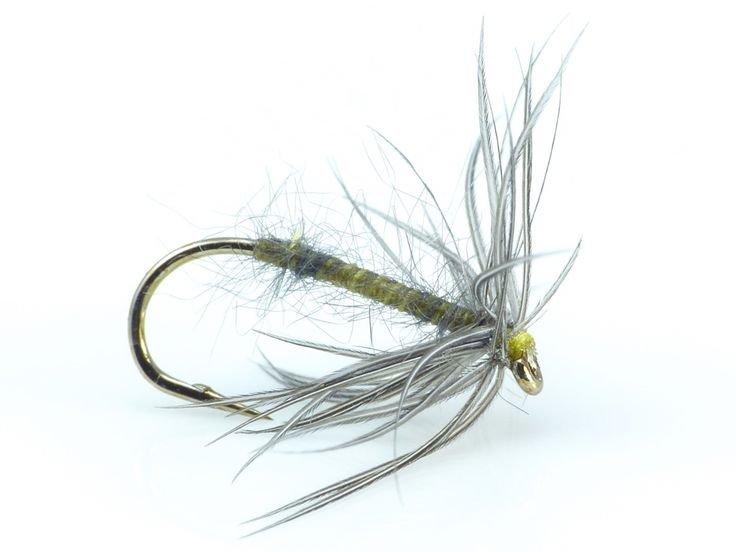
Grannon
Season: April
The Grannom is the first type of sedge to hatch in spring, first emerging in April, with the hatch lasting around two weeks. This small sedge only emerges once per year and as a result, it causes great excitement amongst trout. Grannom become somewhat of an A’ la carte special on the river. Meaning, trout will often ignore any other fly on the water and become selective. Being the only sedge on the water at this time of year, it at least makes fly selection easier.
You can expect the hatch to take place from mid-morning until late-afternoon. As the emerging grannom struggle to take flight, they often fall back to the water’s surface, sending trout into a frenzy. It isn’t uncommon to see trout leap out of the water in pursuit of their prey during a grannom hatch.
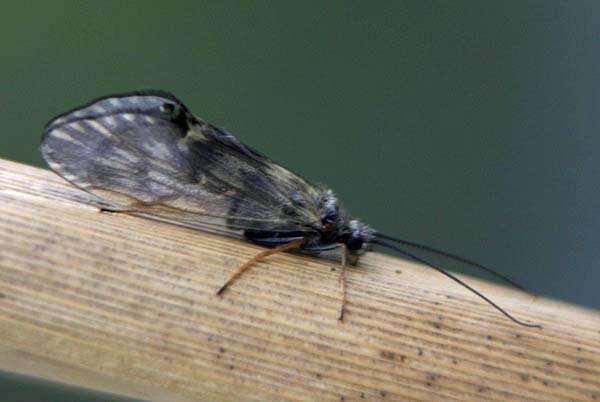
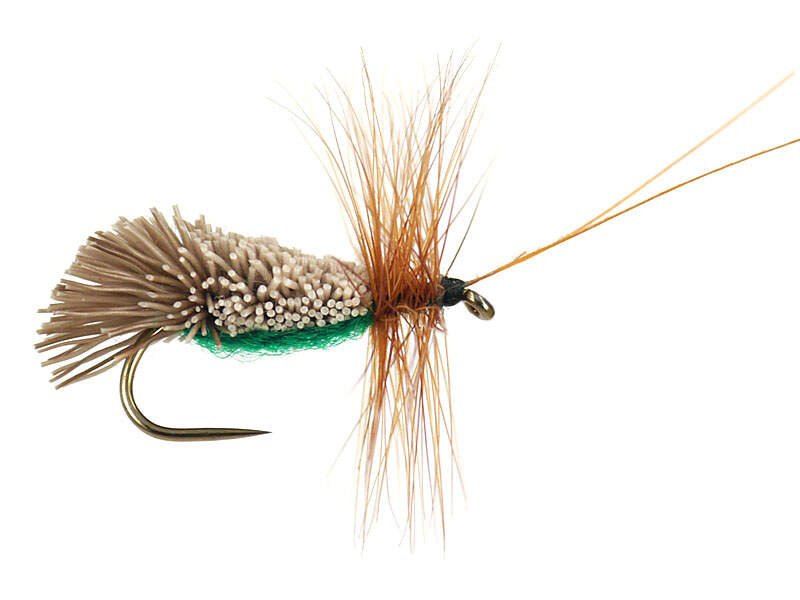

Hawthorn Fly
Season: April – May
The first terrestrial of the year to get any attention from trout is the Hawthorn fly. From late April to mid-May, these flies can be seen buzzing around hedgerows, and when a stiff breeze picks up, they are often blown off course, landing in water where eager trout are more than happy to snap up an easy meal. On upland rivers such as the Edw, hawthorn flies can be a major food source, and optimistic trout become honed into the colour black.

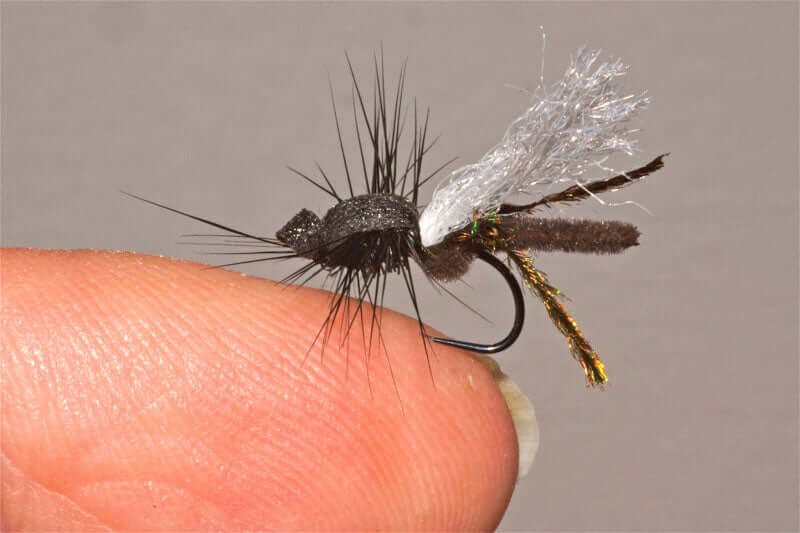

Olive Upright
Season: May – June
The Olive Upright is a major and important food source, the reason why this is the case is due to when it hatches. The Olive Upright hatch takes place in May and June, when hatches of Grannom, LDO, and March Browns have disappeared or diminished. Olive Upright duns can be seen on the water from dawn to dusk, but it is during heavy evening hatches that trout become selective and close imitation is needed. The body of the Olive Upright is olive to brown and is segmented by orange bands.



Iron Blue
Season: April – October
The smallest up-winged fly you will encounter in spring is the Iron Blue. This fly can be seen on the water from April to October, but the height of the hatch is in May, June and October. It is much darker than other flies, and its wings are a distinctive dark gray colour. Iron Blues are also known to hatch on days with bad weather, from lunchtime until early evening.
In the afternoon, spinners return to the water to lay their eggs. During the final stage of their life the spinners take on a distinct appearance and are worth imitating. Female spinner takes on a claret colour so make sure to carry the necessary patterns to match this.

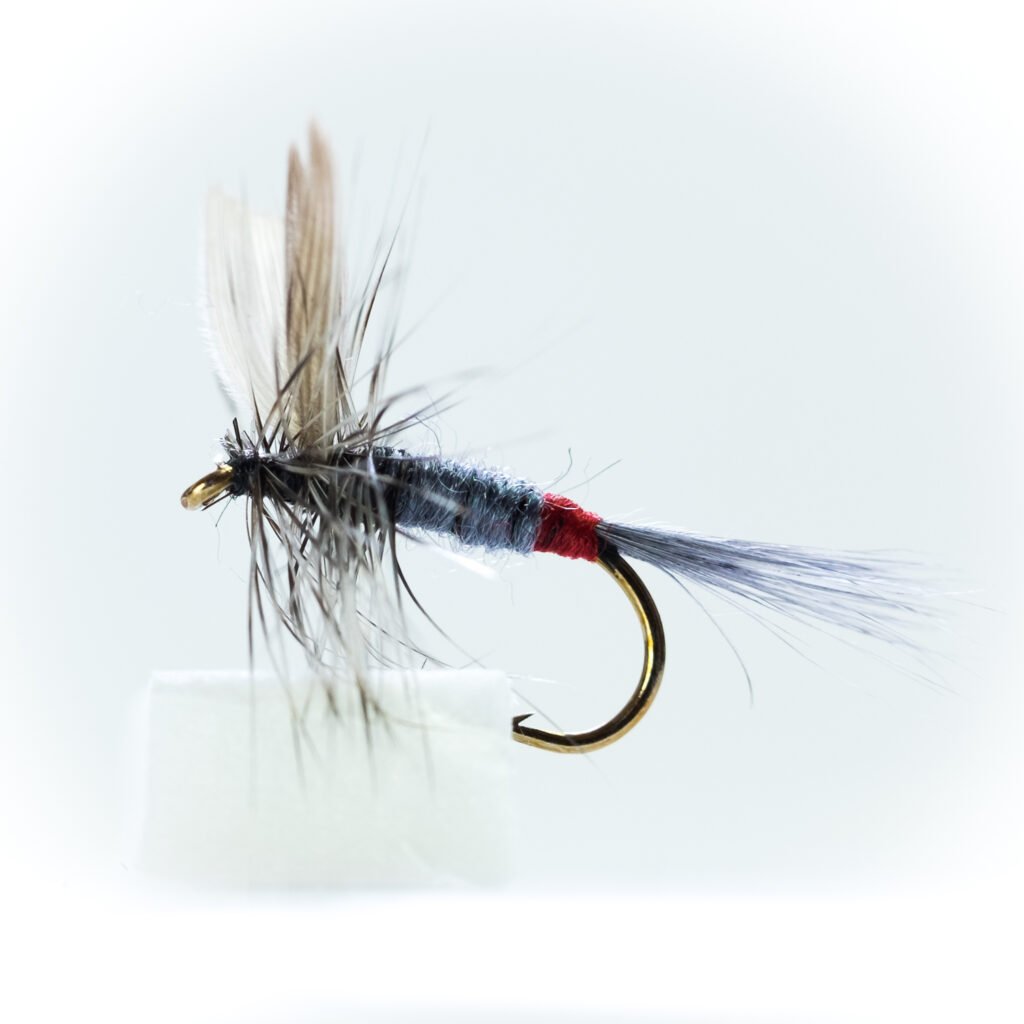

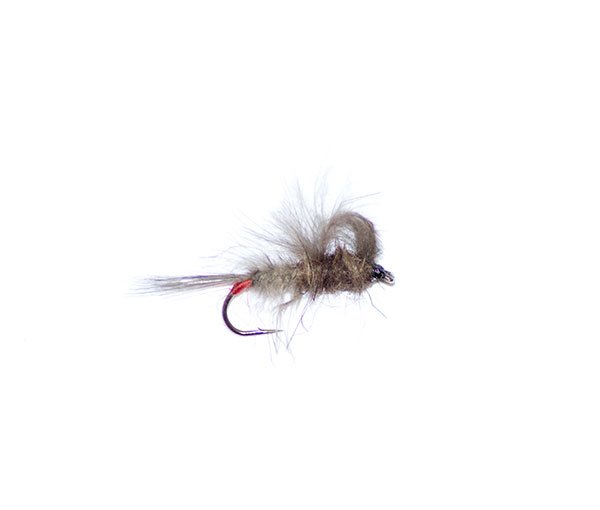
Yellow May
Season: May – June
The distinctive Yellow May begins to hatch from mid-May into June and July, which are the peak months. Yellow May’s can be seen hatching from mid-morning onward, with their numbers increasing towards dusk. During the day, it is rare to see trout selectively feeding on them due to insufficient numbers. However, on warm summer evenings, the entirety of the day’s hatch returns to lay their eggs from dusk to darkness. This mass arrival of spinners and duns can cause trout to become very preoccupied and selective.

Mayfly
Season: May – June
Mayflies are held in the highest esteem amongst both trout and fishermen. They are the largest up-winged fly and are light cream in colour. The period when mayflies hatch is sometimes called ‘duffers fortnight’, as the trout adopt a kamikaze attitude when dining on mayflies. This isn’t always the case, though. You can expect to see mayflies on the water from mid-May to June; the hatch can vary year to year depending on how cold winter has been. Mayfly nymphs need silt and sediment to thrive, which means the most abundant Mayfly hatches take place on chalk streams or the lower to middle reaches of spate rivers. You can expect to see mayflies hatching for a few hours from early afternoon until evening.

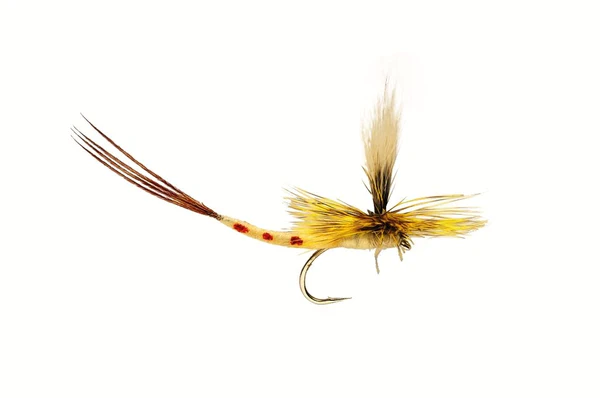
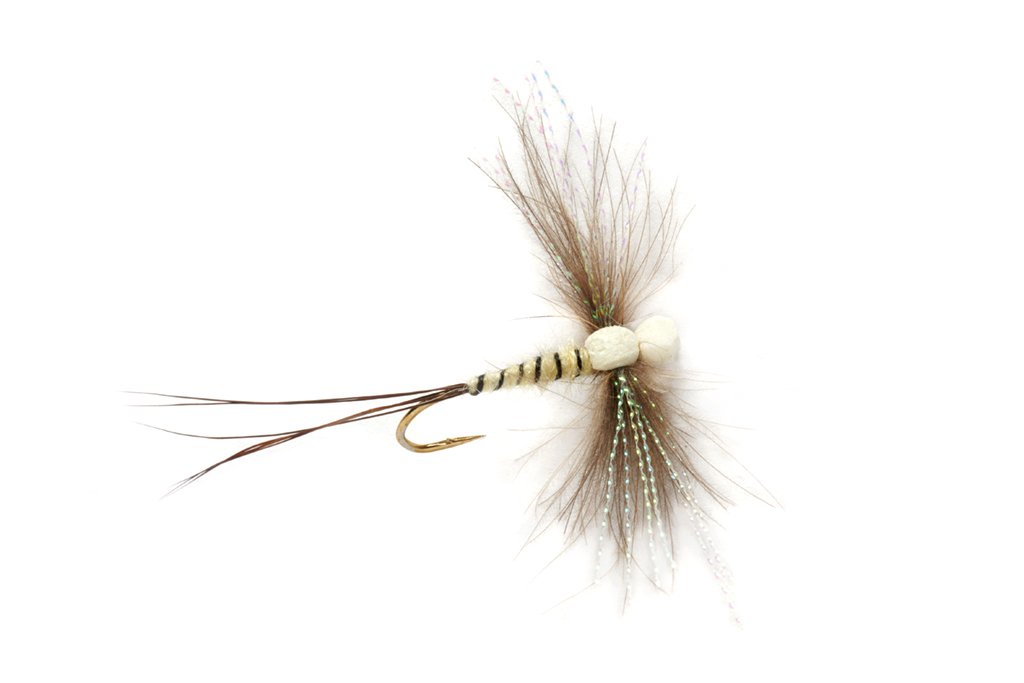
Summer Trout flies
The end of the mayfly hatch signals Summer has begun in fly fishing terms. Fly hatches are now confined to early in the morning or evening, when temperatures cool. Summer is the time of the evening rise, a time when the whole river can be rising until the last drop of light drains out of the sky.
Pale Watery
Season: June – September
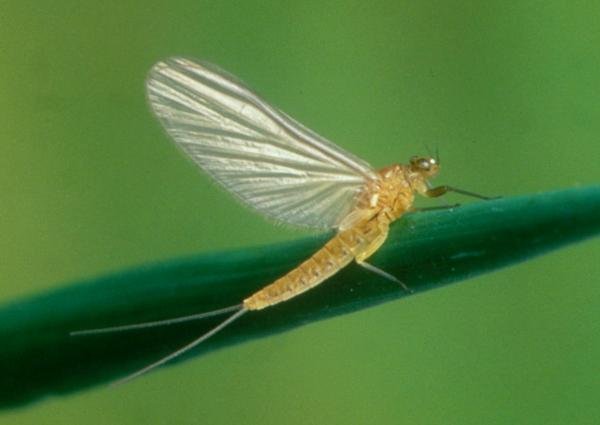

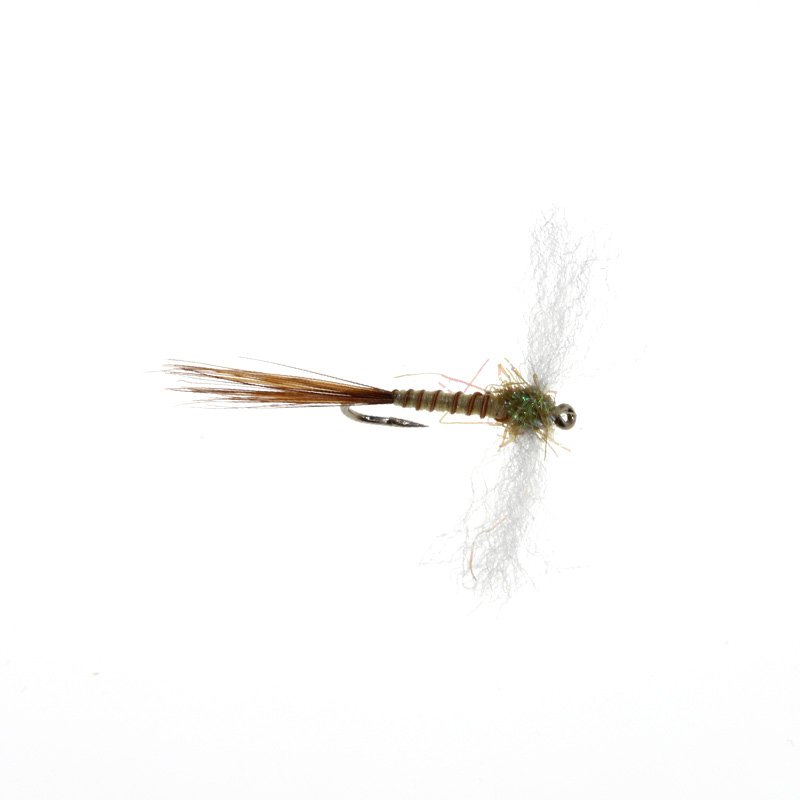
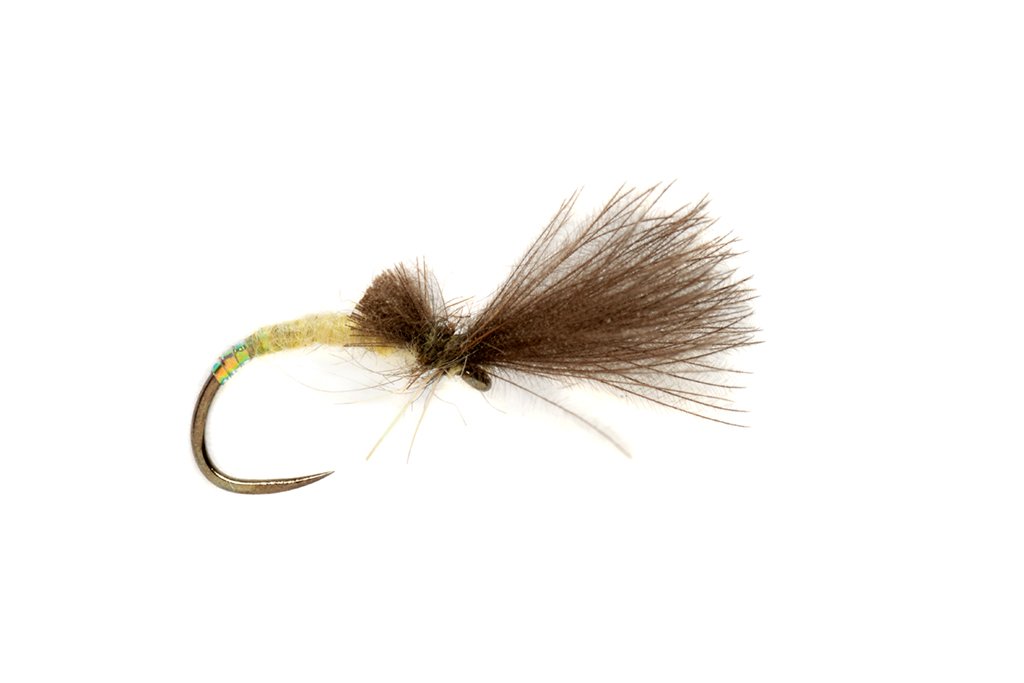
Blue Winged Olives
Season: June – September
If you are river fishing in summer, I’m certain you will come across the Blue-winged olive. This medium-sized olive can be seen on the water all summer, but June and September are known for having the heaviest hatches. The hatch normally begins in the late afternoon or early evening and continues until dark. Both the duns and the spinners can be seen on the water at the same time, presenting a challenge to the fly angler.
This challenge is working out which life stage the trout are showing a preference for. Will it be nymphs just under the surface, the adult dun, egg-laying, or spent spinners trapped in the surface film? In my experience, the most important stage to imitate during a summer evening rise is the spinner. BWO spinner is orange in colour and inspired the famous dry fly sherry spinner.
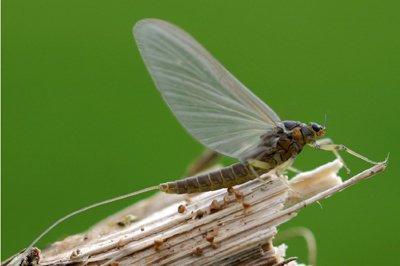
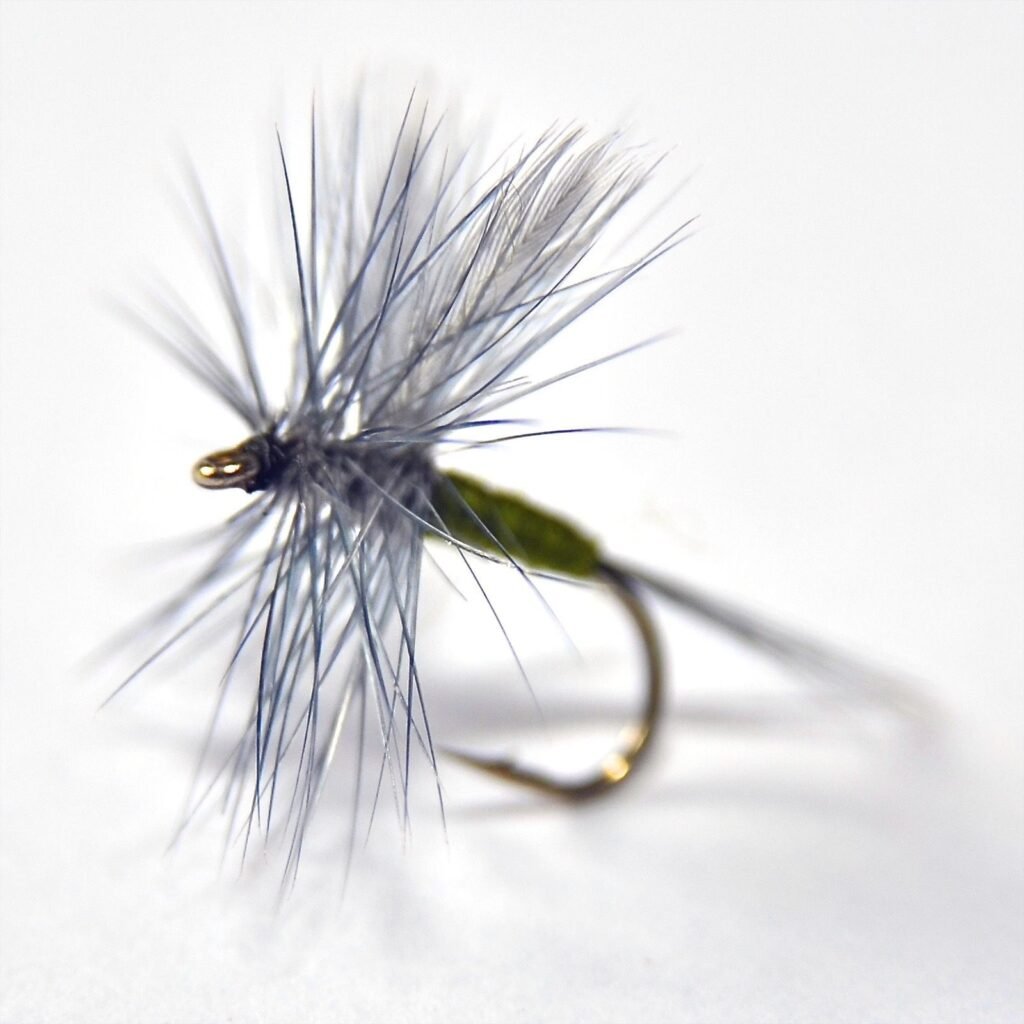

Sedges
Season: June – October
The summer season is sedge season. Welshman’s button, Large cinnamon sedge, Cinnamon sedge, Great red sedge, Brown silverhorn sedge, Marbled sedge and finally the Grouse winged sedge make up the 7 species of sedge that can be found on our rivers during the summer months. Sedge body colouration varies from olive to browny red and even dark brown to black. These colourations can be imitated by carrying a range of imitations in varying shades of generalist patterns. It is also wise to carry patterns to imitate the adults, pupa, and spent sedges.
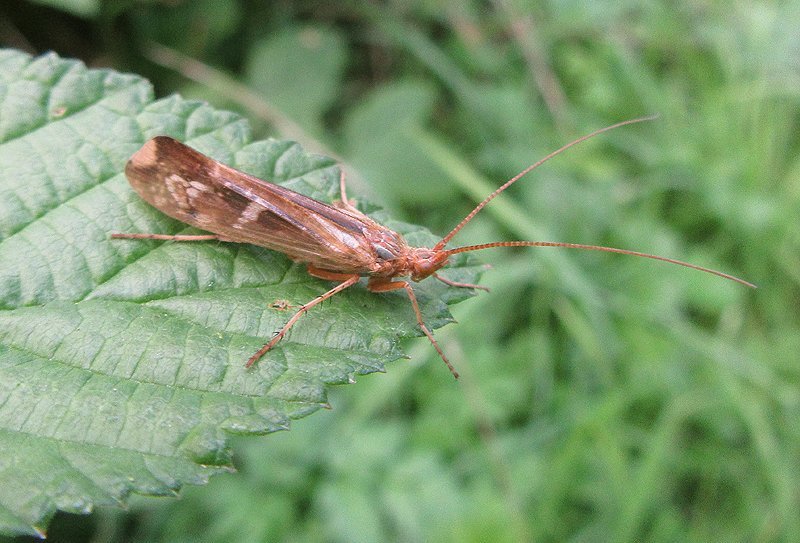

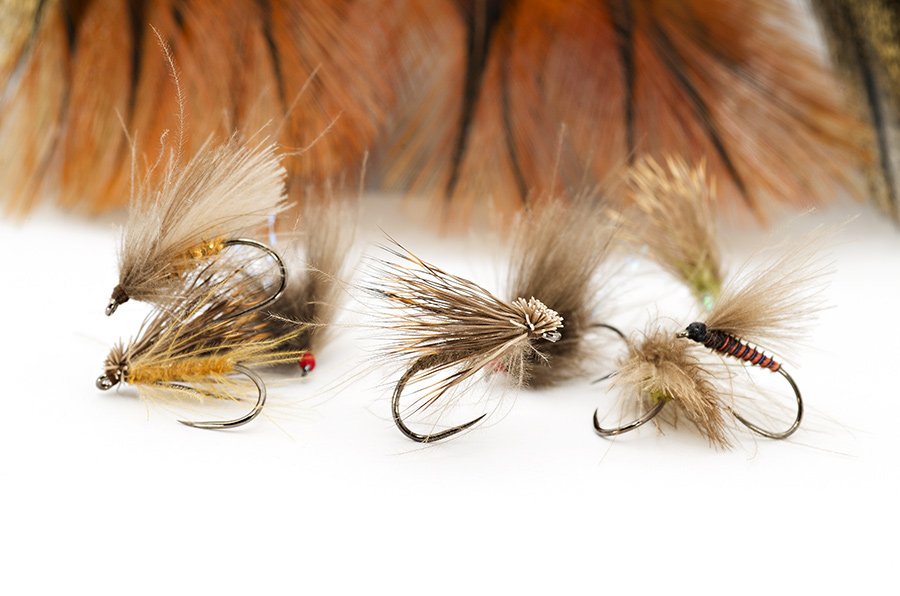
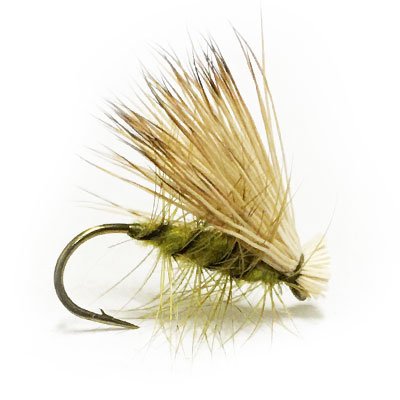
Coch-y-bonddu
Season: June – September
Being based in Wales, we couldn’t not mention the legendary Coch-y-bonddu beetle. While fishing the Elan Valley reservoirs, I’ve seen what appears to be every fish in the lake rising on a blustery day when Coch-y-bonddu beetles are being blown on to the lake. You can expect to find this beetle on any upland river or lake surrounded by braken covered hills from June to September.
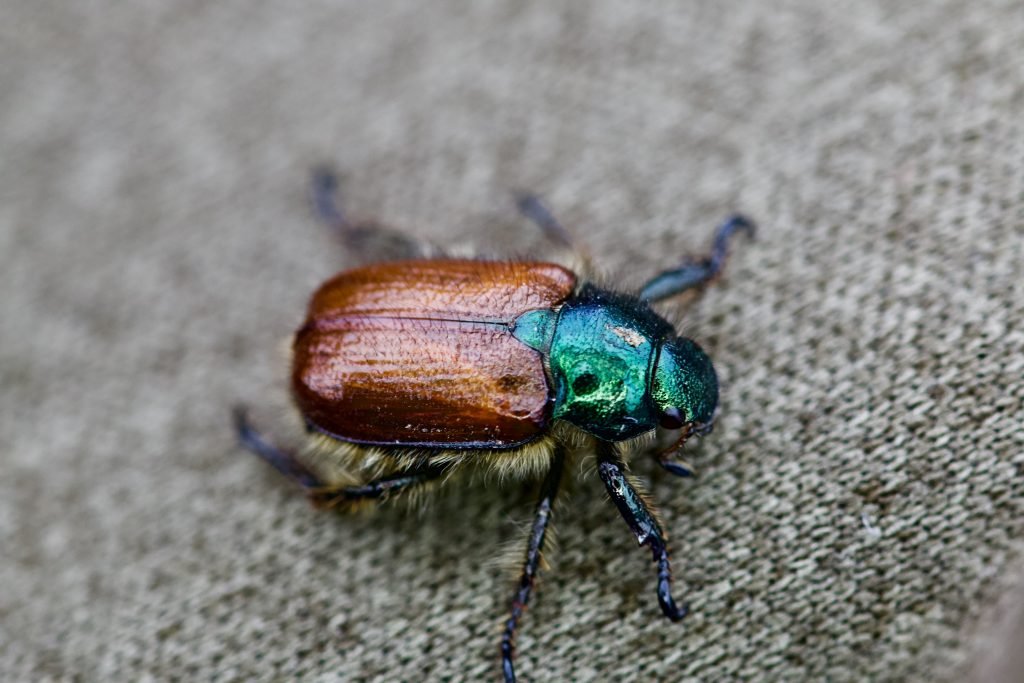
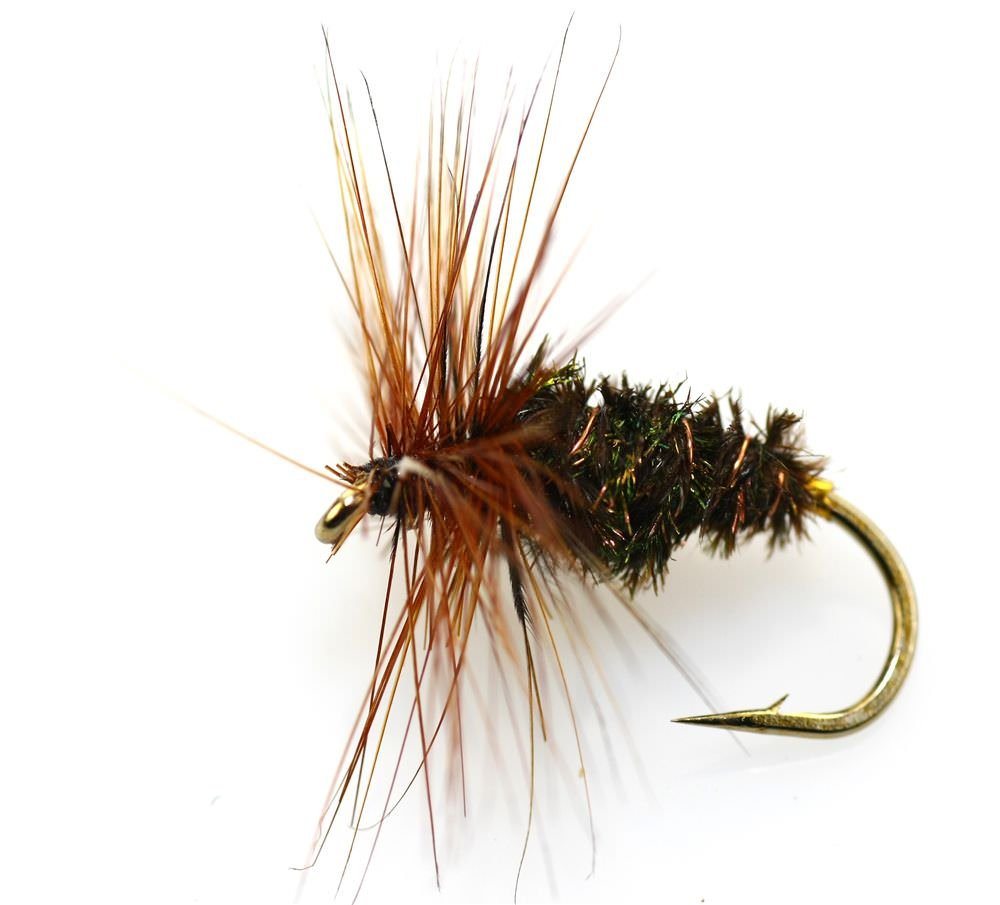
Autumn trout flies
As summer turns to autumn, you can expect to see many of the flies that made an appearance in spring begin to hatch in numbers again. Just remember, the autumn hatches of these same flies tend to be slightly smaller than their spring counterparts. In the next section of this guide, we will cover flies that are unique to the autumn months.
Crane fly (Daddy Long Legs)
Season: August – October
The crane fly is distinctive, recognisable and readily consumed by hungry trout. On warm, late summer and autumn days, these flies are regularly blown on to the water, and it is worthwhile having an imitation at hand. The large size of the crane fly makes it a great pattern for prospecting on both running and still water.
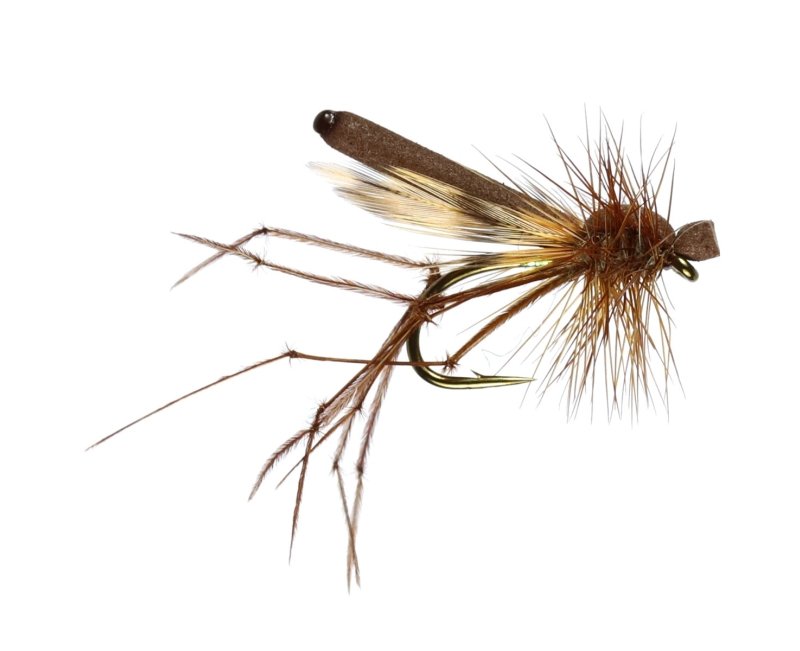
Sedges
Sedges continue to hatch into the autumn months, and the same generalist patterns will work here too. Just remember to try and match fly size and colour with your artificial fly.
Autumn Dun
Season: August – October
The autumn dun begins to hatch in late August, but they are most numerous in the month of September. They normally hatch from late afternoon to early evening by crawling out of the water onto nearby rocks or reeds. Although nymphs do sometimes hatch straight out of the water’s surface, Being a relatively large and dark fly, a March brown imitation can prove to be a deadly imitation.

A few last words
I hope that this guide to matching the hatch is useful and helps with your fly selection. The hatch chart section of this guide has been configured for mobile, so it can be easily viewed while on the bank.
If you encounter a situation where there is no apparent hatch, often the best course of action is to fish nymphs. You really can’t go wrong with either a pheasant tail or hare’s ear nymph; these two flies will cover nymph imitations for all the flies discussed above.
If fly fishing for grayling in winter, hatches will be limited, but we discuss the necessary tactics in our other article.
Tight Lines
James.

Really helpfull site man,very informative but easy to follow,well done regards Tony
Thanks Tony! I’m glad you found the article useful
Perfect and extremely helpful. Thank you.
Very clear and concise information James. Well done !
Say hello to Mark for me. I know your dad.
Best regards
Tim French
Thanks for the feedback Tim!! My Dad says hello!
Just what I was looking for👍
Great to hear Martin!!
Pingback: Early Season River Trout Fly Fishing - flyrun
Pingback: Upstream Nymph Fishing | FLYRUN
Pingback: Early Season River Trout Fly Fishing - Outdoor Adventure
Pingback: How to Fly Fish for Grayling - FLYRUN